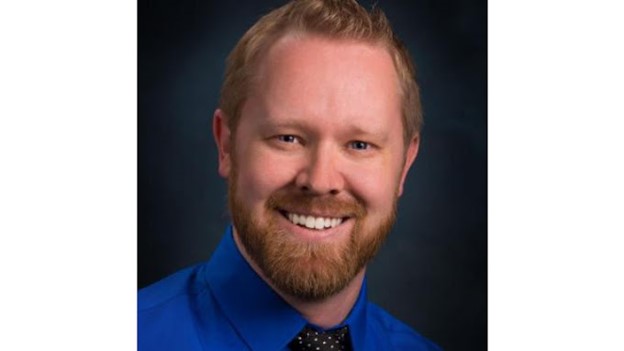This blog is part four of a six-part series on the art of preceptorship. Learn more about becoming a preceptor.
Where do you work and precept?
I work as a family medicine physician in an outpatient primary care clinic in Gilbert, AZ (a suburb of Phoenix), and I take care of newborns at Mercy Gilbert Medical Center. I work with both students and residents in the primary care clinic, and serve as the assistant program director for the Dignity Health East Valley Family Medicine Residency Program and the clinical course director for family medicine at AT Still University School of Osteopathic Medicine-Arizona (SOMA). I also teach first-year osteopathic medical students in their clinical skills course at SOMA.
Can you share your journey to becoming a preceptor?
During undergrad and before starting medical school at Midwestern University, I taught English, math, and orchestra at a small private school. I come from a long line of educators and knew I wanted to continue teaching even after medical school. Once I finished residency, I took the first six months of being a new attending to get settled before reaching out to my alma mater to see about taking third-year students. After six months of working with medical students, I made the transition to graduate medical education and joined the faculty of a family medicine residency in Mesa, AZ. I became assistant program director at that program, and then made the jump to program director right at the beginning of the COVID pandemic. I learned a lot about precepting and mentoring during my four years as a program director and ultimately decided I didn’t love the administrative side of the position, so I transitioned to a more clinical and educational role at a new program, where I have been for the last year.
What aspect of being a preceptor do you find the most rewarding?
My greatest joy is to inspire my students to become teachers. When I hear a learner say to another student, “Here’s how Dr. Ihms taught me . . . ” or I hear my student use my exact phrasing to teach a patient about their condition, it stokes the fire in my heart to continue to teach.
I try to impart two lessons to all my learners: every patient is important, and evidence-based medicine is best. When I see my students evolve during our rotation and start to take ownership of our patients and treat them not like strangers with diseases but as cherished family with complex lives, I find hope that future generations can carry on the tradition of personalized medicine that cares for the whole person.
What tools or habits have helped you integrate teaching into your daily workflow?
There are three habits I use to make my teaching more effective and more natural as I navigate the usual challenges of a busy clinic schedule.
First, all learners want to feel like they belong and that they know what they are supposed to be doing. Every new learner is instructed to show up 30 minutes before my normal start time to begin the rotation with a discussion about the upcoming month. I begin the conversation with the phrase, “Welcome to family medicine. I’m Dr. Ihms. What do you go by?” Then, using the provided name, which is often a middle name or a shortened version of their name, I say, “FIRSTNAME, I am adopting you into the family medicine community for the next month. Consider yourself one of us.” We then move into schedules for the month and their responsibilities as far as patients go. I consistently get great feedback from students after the rotation mentioning how they felt like they belonged and they were part of the team. They felt like they were more than just “Generic Medical Student 42.”
Second, I ask the learners what their goals are. While I hope to inspire all my students to go into family medicine, I have grudgingly come to the realization that other specialties need students to fill their ranks as well. I try to have each student give me at least three goals, with at least one of them one that can be measured during our rotation. A student going into cardiology might say they want to hear at least ten different murmurs, practice managing CHF on four different patients, and read five ECGs. We make sure we write them down and place them in a visible place in the office. Then I can check in with the learner throughout the month to see how we are progressing on our goals.
When a student can articulate what they are hoping to get out of the rotation from the start, it allows me to customize their experience to support their aspirations. For example, I might make a more concerted effort to include the student in more musculoskeletal cases if I know they are going into orthopedics. However, I believe even orthopedic surgeons need to know some basics of managing diabetes, and so I can also tailor my discussions with these students on how to approach a patient with diabetes and how to support their primary care colleagues in caring for these patients who not only have broken bones but also have endocrine complications. Learners feel more engaged when they know their future is being impacted and when their goals are measurable.
Finally, I use the One-Minute Preceptor model to maximize clinical efficiency while still providing high-quality education. This model originated from a paper published in the Journal of the American Board of Family Practice in 1992 titled “A five-step ’microskills‘ model of clinical teaching.” The model then evolved over the years to become a method that helps learners and preceptors in a variety of settings.
The five steps (or microskills) of the model are as follows:
- Get a commitment (a single verbal statement about the case).
- Probe for supporting evidence (ask the learner to explain their reasoning).
- Reinforce what was done well (ideally linking this back to competencies and being specific).
- Give guidance about errors and omissions (again linking this to competencies and being specific).
- Teach a general principle (something the learner can then apply to future cases).
Using this method to precept both residents and students has increased the engagement of my learners without slowing me down in the midst of a busy day. Initially there is a learning curve while the students and residents adapt to this method, but usually by the end of the rotation, this is truly a 1-2 minute process. For those who might want to look further into this model, the Society of Teachers of Family Medicine has a great introduction that can be downloaded for free. Like all things worth doing, it does take some practice, but the payoff is worth it.
By incorporating these three tools, I have found that learners feel seen and are more likely to view themselves as part of the care team and are thus more engaged both in patient care and in their own learning, the learners have measurable outcomes that allow for more intentional teaching and a more objective evaluation at the end of the rotation, and I enjoy working with them more because I have the time to teach and don’t feel the conflicting pressures to balance my patient care with making sure the learners are getting a good experience.






